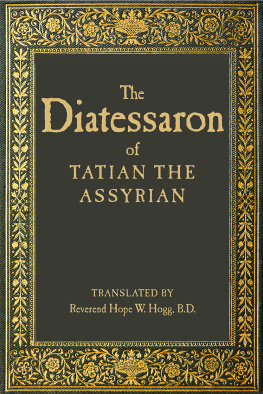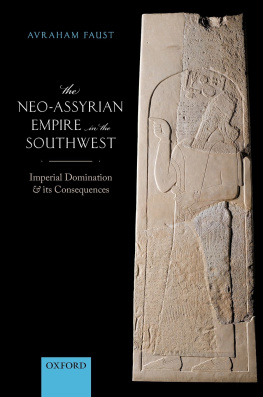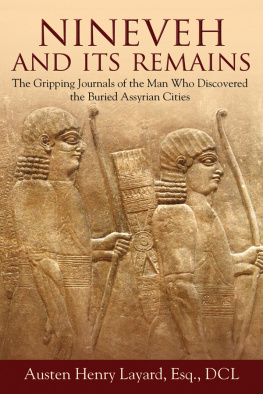CHAPTER I Assyrian Historians and their Histories
CHAPTER II The Beginnings of True History (Tiglath Pileser I)
CHAPTER III The Development of Historical Writing (Ashur nasir apal and Shalmaneser III)
CHAPTER IV Shamshi Adad and the Synchronistic History
CHAPTER V Sargon and the Modern Historical Criticism
CHAPTER VI Annals and Display Inscriptions (Sennacherib and Esarhaddon)
CHAPTER VII Ashur bani apal and Assyrian Editing
CHAPTER VIII The Babylonian Chronicle and Berossus
CHAPTER I
Table of Contents
ASSYRIAN HISTORIANS AND THEIR HISTORIES
To the serious student of Assyrian history, it is obvious that we cannot write that history until we have adequately discussed the sources. We must learn what these are, in other words, we must begin with a bibliography of the various documents. Then we must divide them into their various classes, for different classes of inscriptions are of varying degrees of accuracy. Finally, we must study in detail for each reign the sources, discover which of the various documents or groups of documents are the most nearly contemporaneous with the events they narrate, and on these, and on these alone, base our history of the period.
To the less narrowly technical reader, the development of the historical sense in one of the earlier culture peoples has an interest all its own. The historical writings of the Assyrians form one of the most important branches of their literature. Indeed, it may be claimed with much truth that it is the most characteristically Assyrian of them all. [Footnote: This study is a source investigation and not a bibliography. The only royal inscriptions studied in detail are those presenting source problems. Minor inscriptions of these rulers are accorded no more space than is absolutely necessary, and rulers who have not given us strictly historical inscriptions are generally passed in silence. The bibliographical notes are condensed as much as possible and make no pretense of completeness, though they will probably be found the most complete yet printed. Every possible care has been taken to make the references accurate, but the fact that many were consulted in the libraries of Cornell University, University of Chicago, Columbia University, and the University of Pennsylvania, and are thus inaccessible at the time when the work is passing through the press, leaves some possibility of error. Dr. B. B. Charles, Instructor in Semitics in the University of Pennsylvania, has kindly verified those where error has seemed at all likely.For the English speaking reader, practically all the inscriptions for the earlier half of the history are found in Budge-Kjing, Annals of the Kings of Assyria. 1. For the remainder, Harper, Assyrian and Babylonian Literature, is adequate, though somewhat out of date. Rogers, Cuneiform Parallels to the, Old Testament, gives an up to date translation of those passages which throw light on the Biblical writings. Other works cited are generally of interest only to specialists and the most common are cited by abbreviations which will be found at the close of the study.]
The Assyrians derived their historical writing, as they did so many other cultural elements, from the Babylonians. In that country, there had existed from the earliest times two types of historical inscriptions. The more common form developed from the desire of the kings to commemorate, not their deeds in war, but their building operations, and more especially the buildings erected in honor of the gods. Now and then we have an incidental reference to military activities, but rarely indeed do we find a document devoted primarily to the narration of warlike deeds. Side by side with these building inscriptions were to be found dry lists of kings, sometimes with the length of their reigns, but, save for an occasional legend, there seem to have been no detailed histories. It was from the former type that the earliest Assyrian inscriptions were derived. In actual fact, we have no right to call them historical in any sense of the word, even though they are our only sources for the few facts we know about this early period. A typical inscription of this type will have the form "Irishum the vice gerent of the god Ashur, the son of Ilushuma the vice gerent of the god Ashur, unto the god Ashur, his Lord, for his own life and for the life of his son has dedicated". Thus there was as yet little difference in form from their Babylonian models and the historical data were of the slightest. This type persisted until the latest days of the Assyrian empire in the inscriptions placed on the bricks, or, in slightly more developed form, in the inscriptions written on the slabs of stone used for the adornment of palace or temple. For these later periods, they rarely have a value other than for the architectural history, and so demand no further study in this place. Nevertheless, the architectural origin of the historical inscription should not be forgotten. Even to the end, it is a rare document which does not have as its conclusion a more or less full account of the building operations carried on by the monarch who erected it.
It was not long until the inscriptions were incised on limestone. These slabs, giving more surface for the writing, easily induced the addition of other data, including naturally some account of the monarch's exploits in war. The typical inscription of this type, take, for example that of Adad nirari I, [Footnote: BM. 90,978; IV. R. 44 f.; G. Smith, Assyr. Discoveries, 1875, 242 ff.; Pognon, JA. 1884, 293 ff.; Peiser, KB. I. 4 ff.; Budge-King, 4 ff.; duplicate Scheil, RT. XV. 138 ff.; Jastrow, ZA. X. 35 ff.; AJSL. XII 143 ff.] has a brief titulary, then a slightly longer sketch of the campaigns, but the greater portion by far is devoted to the narration of his buildings. This type also continued until the latest days of the empire, and, like the former, is of no value where we have the fuller documents.
When the German excavations were begun at Ashur, the earliest capital of the Assyrian empire, it was hoped that the scanty data with which we were forced to content ourselves in writing the early history would soon be much amplified. In part, our expectations have been gratified. We now know the names of many new rulers and the number of new inscriptions has been enormously increased. But not a single annals inscription from this earlier period has been discovered, and it is now becoming clear that such documents are not to be expected. Only the so-called "Display" inscriptions, and those with the scantiest content, have been found, and it is not probable that any will be hereafter discovered.
It was not until the end of the fourteenth century BC with the reign of Arik den ilu, that we have the appearance of actual annalistic inscriptions. That we are at the very beginning of annalistic writing is clear, even from the fragmentary remains. The work is in annals form, in so far as the events of the various years are separated by lines, but it is hardly more than a list of places captured and of booty taken, strung together by a few formulae. [Footnote: Scheil, OLZ. VII. 216. Now in the Morgan collection, Johns,












